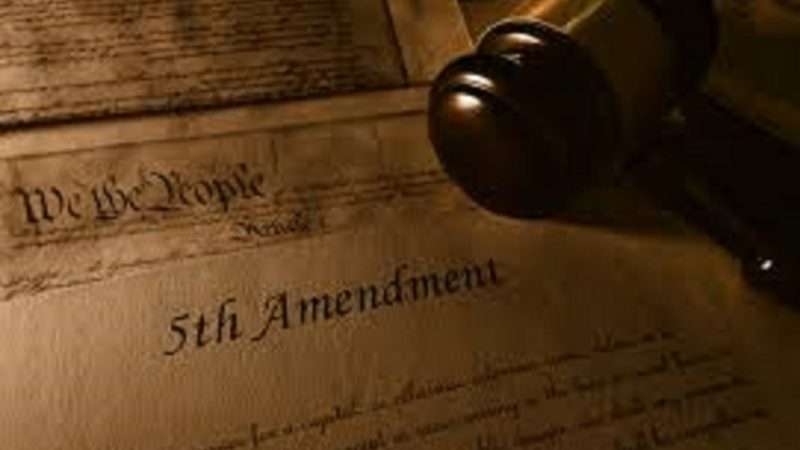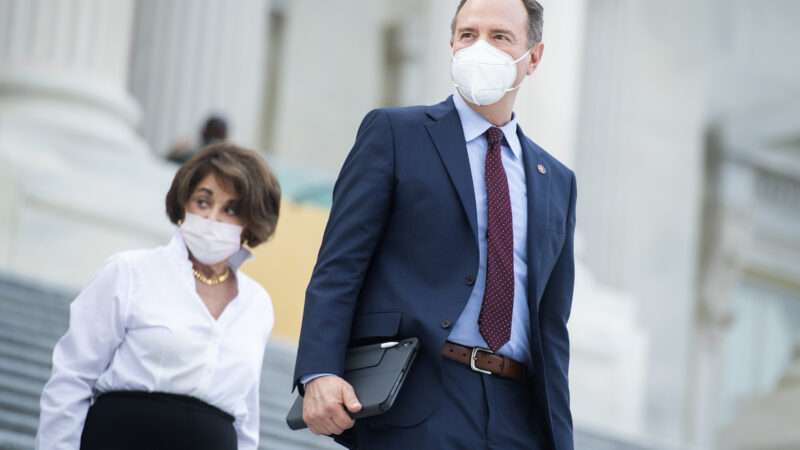
Earlier today, the Supreme Court refused to hear Bridge Aina Le’a v. Hawaii Land Use Commission, an important regulatory takings case that might have forced the justices to clarify the Court’s badly flawed jurisprudence in this field. Regulatory takings cases arise when the government restricts property owners’ rights, but without physically invading, occupying, or destroying the property in question. Scholars and other legal commentators across the political spectrum have long recognized that regulatory takings jurisprudence is a mess, though there is deep disagreement about how to fix it. The Court’s most recent regulatory takings ruling—Murr v. Wisconsin (2017)—actually made the mess even worse than it was before.
As Jonathan Adler notes, Justice Clarence Thomas wrote a forceful dissent lamenting the sorry state of the doctrine and the Court’s seeming unwillingness to improve it:
I recently explained that “it would be desirable for us to take a fresh look at our regulatory takings jurisprudence, to see whether it can be grounded in the original public meaning of the Takings Clause of the Fifth Amendment or the Privileges or Immunities Clause of the Fourteenth Amendment.” Murr v. Wisconsin, 582 U. S. ___, ___ (2017) (dissenting opinion)….
Our current regulatory takings jurisprudence leaves much to be desired. A regulation effects a taking, we have said, whenever it “goes too far.” Pennsylvania Coal Co. v.
Mahon, 260 U. S. 393, 415 (1922). This occurs categorically whenever a regulation requires a physical intrusion, Loretto v. Teleprompter Manhattan CATV Corp., 458 U.S. 419 (1982), or leaves land “without economically beneficial or productive options for its use,” Lucas v. South Carolina Coastal Council, 505 U. S. 1003, 1018 (1992). But such cases are exceedingly rare…. For all other regulatory takings claims, the Court has “generally eschewed any set formula for determining how far is too far,” requiring lower courts instead “to engage in essentially ad hoc, factual inquiries.” Tahoe-Sierra Preservation Council, Inc. v. Tahoe Regional Planning Agency, 535 U. S. 302, 326 (2002) (internal quotation marks omitted). Factors might include (1) “[t]he economic impact of the regulation on the claimant,” (2) “the extent to which the regulation has interfered with distinct investment-backed expectations,” and (3) “the character of the governmental action.” Penn Central Transp. Co. v. New York City, 438 U. S. 104, 124 (1978)…. As one might imagine, nobody—not States, not property owners, not courts, nor juries—has any idea how to apply this standardless standard.
This case illustrates the point. After an 8-day trial and with the benefit of jury instructions endorsed by both parties, the jury found a taking. The District Court, in turn, concluded that there was an adequate factual basis for this verdict. But the Ninth Circuit on appeal reweighed and reevaluated the same facts under the same legal tests to conclude that no reasonable jury could have found a taking. These starkly different outcomes based on the application of the same law indicate that we have still not provided courts with a “workable standard.” Pomeroy, Penn Central After 35 Years: A Three Part Balancing Test or One Strike Rule? 22 Fed. Cir. B. J. 677, 678 (2013). The current doctrine is “so vague and indeterminate that it invites unprincipled, subjective decision making” dependent upon the decisionmaker. Echeverria, Is the Penn Central Three-Factor Test Ready for History’s Dustbin? 52 Land Use L. & Zon. Dig. 3, 7 (2000); see also Eagle, The Four-Factor Penn Central Regulatory Takings Test, 118 Pa. St. L. Rev. 601, 602 (2014) (“[T]he doctrine has become a compilation of moving parts that are neither individually coherent nor collectively compatible”). A know-it-when-you-see-it test is no good if one court sees it and another does not.
Next year will mark a “century since Mahon,” during which this “Court for the most part has refrained from” providing “definitive rules.” Murr, 582 U. S., at ___ (slip op., at 7). It is time to give more than just “some, but not too specific, guidance.” Palazzolo v. Rhode Island, 533 U. S. 606, 617 (2001). If there is no such thing as a regulatory taking, we should say so. And if there is, we should make clear when one occurs. I respectfully dissent.
Nearly everything that Thomas says here is on target. Current regulatory takings doctrine is indeed a mess that provides little in the way of clear guidance for lower courts, property owners, and state and local governments. As I have pointed out previously, Murr and earlier rulings in this field are virtually a full-employment act for takings lawyers, property scholars and other experts in this field. I would add that the result of applying the Penn Central test is often excessive deference to local governments, even in cases where the burden on property owners is severe.
Thomas is also right to emphasize that the Court’s decisions have so far failed to ground regulatory takings doctrine in the text and original meaning of the Fifth Amendment, or even really attempt to do so. This has led many left-of-center scholars to claim there is no originalist basis for constitutional restrictions on regulatory takings, and that courts should therefore allow government officials impose regulatory restrictions as they wish (except perhaps in cases where they amount to physical invasion or occupation of property).
But scholars such as James Ely, Michael Rappaport, and my George Mason colleague Eric Claeys, have shown that there is in fact a strong originalist justification for classifying many regulatory restrictions on property rights as takings. This is especially true if we focus on the original meaning of the Takings Clause as of the time that the Fourteenth Amendment “incorporated” it and the rest of the Bill of Rights against state and local governments in 1868. Most regulatory takings cases (like most other takings claims) involve challenges to restrictions imposed by states and localities rather than the federal government.
Focusing on the 1868 original meaning of the Bill of Rights is an interpretive approach favored by a wide range of originalist legal scholars on both right (e.g.—Kurt Lash) and left (e.g.- Akhil Amar). I discuss its implications for property rights and the Takings Clause in greater detail in Chapter 2 of my book The Grasping Hand.
It is entirely legitimate to criticize the Court—especially the conservative originalist justices—for the Court’s failure to grapple with the original meaning of the Takings Clause, as applied to regulatory takings issues. But it would be a mistake to assume this means there is no good originalist justification for judicial review of regulatory takings. II won’t go into detail here. But there are also good living-constitution arguments for stronger and clearer judicial protection for property rights under the Takings Clause.
Despite Thomas’ forceful call to action, I am not optimistic the Court will decide to clean up the regulatory takings mess anytime soon. They have already passed up several opportunities to do so. The majority of justices may prefer to focus on other issues.
There is actually an important takings case currently on the Court’s docket: Cedar Point Nursery v. Hassid, which I discussed here and here. But it focuses primarily on the boundary line between regulatory and physical takings (specifically on the question of what qualifies as a “permanent” physical occupation of property that qualifies as an automatic “per se” taking). It is therefore unlikely to shed more than modest light on the issues Thomas raises in his dissent in the Bridge case.
Thus, it may be some time before the Court decides to fix regulatory takings jurisprudence in anything approaching a comprehensive way. In the meantime, this morass will continue to be a gold mine for takings experts—and a major pain in the rear end for everyone else!
from Latest – Reason.com https://ift.tt/3keCzlf
via IFTTT
#bayarea #sanfrancisco #fyp




